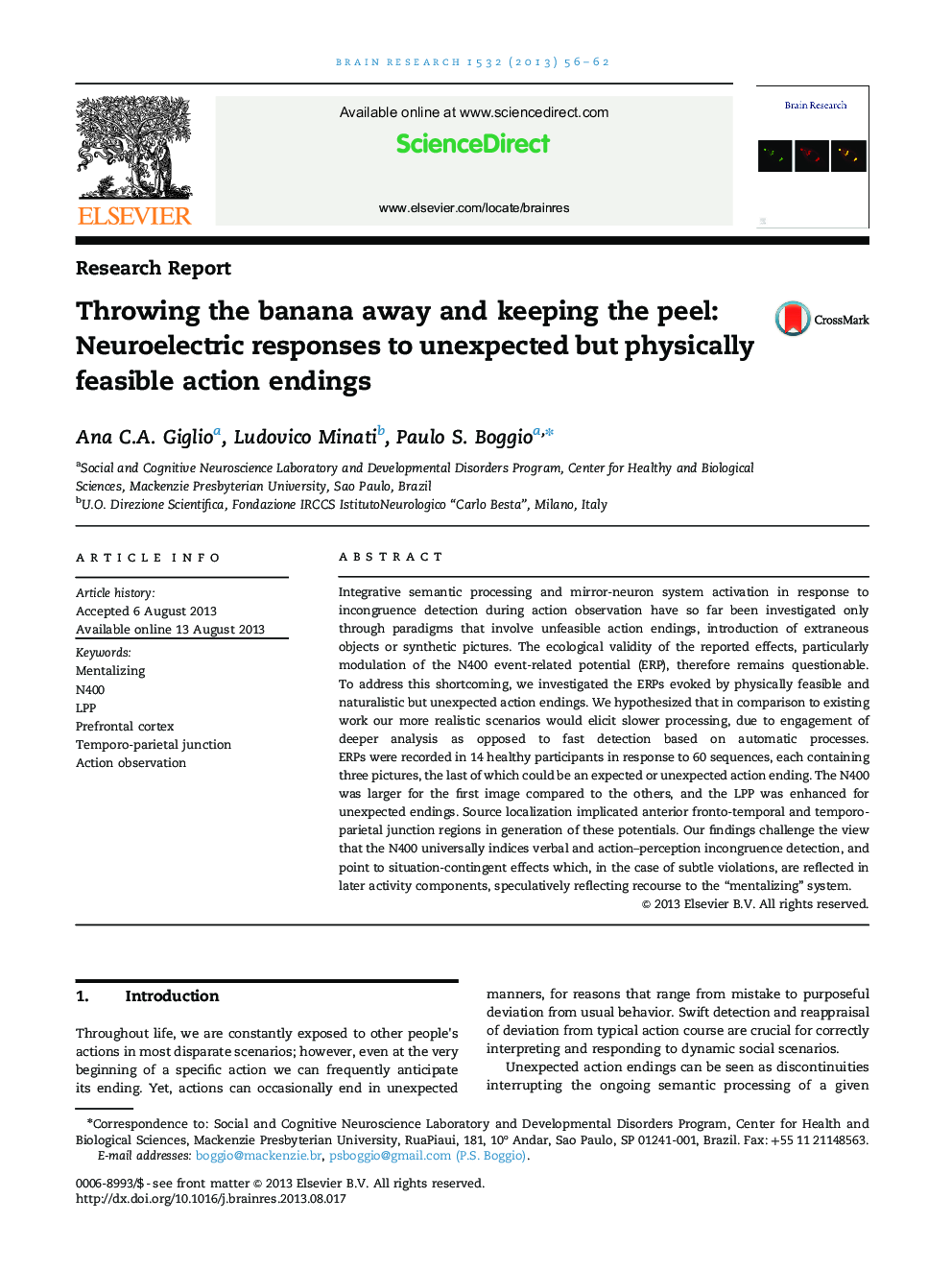| Article ID | Journal | Published Year | Pages | File Type |
|---|---|---|---|---|
| 6263509 | Brain Research | 2013 | 7 Pages |
â¢We investigate the neuro-electric responses to feasible but unexpected action endings.â¢Late positive potential was enhanced in response to unexpected endings.â¢The left anterior prefrontal cortex is more recruited during incongruent endings.â¢We challenge the view that the N400 universally indices incongruence detection.
Integrative semantic processing and mirror-neuron system activation in response to incongruence detection during action observation have so far been investigated only through paradigms that involve unfeasible action endings, introduction of extraneous objects or synthetic pictures. The ecological validity of the reported effects, particularly modulation of the N400 event-related potential (ERP), therefore remains questionable. To address this shortcoming, we investigated the ERPs evoked by physically feasible and naturalistic but unexpected action endings. We hypothesized that in comparison to existing work our more realistic scenarios would elicit slower processing, due to engagement of deeper analysis as opposed to fast detection based on automatic processes. ERPs were recorded in 14 healthy participants in response to 60 sequences, each containing three pictures, the last of which could be an expected or unexpected action ending. The N400 was larger for the first image compared to the others, and the LPP was enhanced for unexpected endings. Source localization implicated anterior fronto-temporal and temporo-parietal junction regions in generation of these potentials. Our findings challenge the view that the N400 universally indices verbal and action-perception incongruence detection, and point to situation-contingent effects which, in the case of subtle violations, are reflected in later activity components, speculatively reflecting recourse to the “mentalizing” system.
